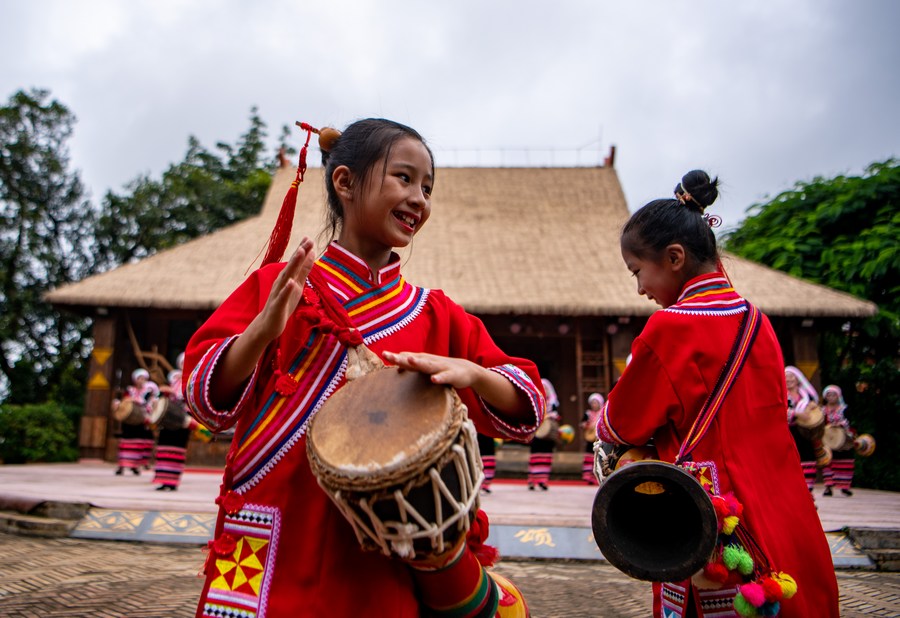

DRAWING STRENGTH FROM THE PAST
For the villagers, their traditions are what make them unique, giving them a comparative advantage in embracing the market economy.
Banli, another Lahu ethnic minority village in Pu'er, has been turning its distinctive dancing culture into an invaluable tourism asset.
The village now has its own performing arts company famous for the "swing dance," a traditional Lahu dance featuring movements described as gentle, neat and graceful, while also involving a degree of stretching.
China is experiencing a rural tourism boom, with many urban dwellers choosing to visit the countryside for a taste of a more simple lifestyle. The vibrant dances and music, as well as traditional Lahu architecture in Banli, are attracting curious visitors from near and far.
Villager Ge Nasi returned to Banli to run a coffee shop after graduating from college in 2021. The cafe, built in the shape of a stilted house, a kind of traditional dwelling of the local Lahu people, has become a tourist attraction in itself.
"The cafe was packed with customers during the recent Spring Festival holiday and made a revenue of around 4,000 yuan per day," said the 25-year-old barista.
Besides tapping into ethnic cultures, Pu'er has also discovered new opportunities resulting from the traditional tea planting.
At Jingmai, a lush mountain known for its forests of ancient tea trees, local ethnic groups such as the Blang and the Dai have regarded tea as an integral part of their lives since ancient times. Locals there still maintain an ancient way of tea cultivation featuring a special multi-layered ecosystem.
The ancient tea forests are now glowing with new vitality as the younger generations are introducing new ideas aimed at better developing the tea industry in this area.
Xian Gong, 38, launched a farmers' cooperative in 2010 in her hometown of Jingmai Village. Later on, she established a company that integrates the cooperative, a tea factory, a hostel and a shop.
Today, tea gardens under the cooperative cover an area of more than 9,000 mu (600 hectares) and generate an annual output of more than 200 tonnes, helping nearly 500 households increase incomes.
More villagers have joined the league in setting up cooperatives, tea factories and homestays. Some of them rapidly catch up with new fads -- selling tea through live streaming, or sharing details of their lives and work on the social networking application WeChat.
"Tea mountain is the most valuable legacy left by our ancestors, and it is the due responsibility of our young people to protect and make good use of it," Xian Gong said.